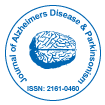æ们éå¢ç»ç»äº 3000 å¤ä¸ªå ¨çç³»åä¼è®® æ¯å¹´å¨ç¾å½ã欧洲åç¾å½ä¸¾åçæ´»å¨äºæ´²å¾å° 1000 å¤ä¸ªç§å¦åä¼çæ¯æ 并åºçäº 700+ å¼æ¾è·åæåå å«è¶ è¿50000åç¥å人士ãç¥åç§å¦å®¶æ ä»»ç¼å§ä¼æåã
å¼æ¾è·åæåè·å¾æ´å¤è¯»è
åå¼ç¨
700 ç§æå å 15,000,000 å读è
æ¯ä»½æå è·å¾ 25,000 å¤å读è
ç´¢å¼äº
- å¥ç½å°¼ç´¢å¼
- è°·æå¦æ¯
- å¤å°å·´·ç½å¯æ¬§
- æå¼ J é¨
- Genamics æåæç´¢
- å¦æ¯é¥å
- æåç®å½
- ä¸å½ç¥ç½ï¼CNKIï¼
- çµåæåå¾ä¹¦é¦
- åèæç´¢
- åå§è¾¾å¤§å¦
- äºå©æ¡é£å·EBSCO
- OCLC-ä¸çç«
- SWB å¨çº¿ç®å½
- èæçç©å¦å¾ä¹¦é¦ (vifabio)
- æ®å¸éæ¯
- æ¥å ç¦å»å¦æè²ä¸ç 究åºéä¼
- 欧洲é å§
- ICMJE
æç¨çé¾æ¥
å¼æ¾è·åæå
å享æ¤é¡µé¢
æ½è±¡ç
Dietary Polyphenols as Potential Therapeutics in Alzheimer?s Disease: Pleiotropic Effects and Toxicity Prediction Models
Efstathia Kalli, Vlamos Panayiotis
Individualized nutritional treatment with polyphenols has been proposed in the early stages of Alzheimer’s disease. However, it remains unclear at what doses polyphenols and their metabolites enter the brain tissue and whether they can act at sufficient concentrations. The present review provides useful insights into the multiple modes of actions of selected polyphenols as potential therapeutic tools at the pre-clinical stage of Alzheimer’s disease, as well as their ability to cross the blood-brain barrier and their detrimental effects after high dose consumptions. Several studies proposed flavonoids for their potential value in prevention and treatment of neurodegenerative diseases. The scarcity of clinical data though highlights the need for conducting metabolomics studies and well-designed clinical trials. Prolonged clinical trials with bioinformatics tools are needed to fully elucidate both neuroprotective effects and possible risks from polyphenol consumption at concentrated high doses.

 English
English  Spanish
Spanish  Russian
Russian  German
German  French
French  Japanese
Japanese  Portuguese
Portuguese  Hindi
Hindi